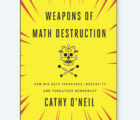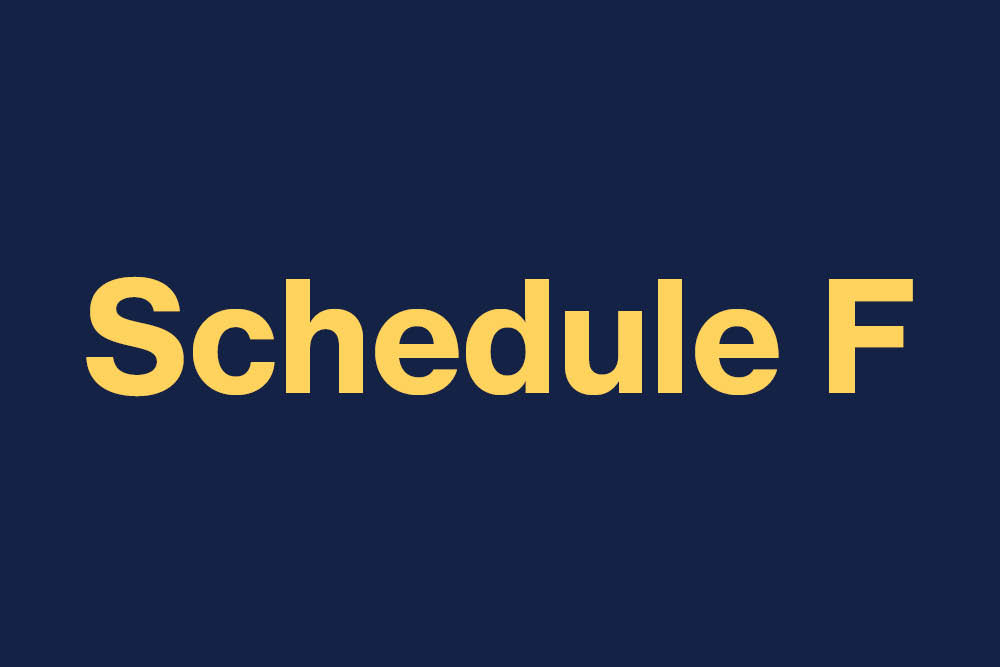
As digital technology shapes contemporary insurance models, actuaries are helping along the way.
When insurtech was coming to the forefront a half decade ago, the expectation was that technology-based companies would use their wares to disrupt the traditional insurance model and provide better products and services.
Showing insureds, who were accustomed to dealing with carriers through agents and customer service representatives, that they could trust insurtechs with their next-generation minimalist web designs, chatbots and pre-filled personal information was difficult to imagine. But now, actionable online platforms are becoming more commonplace. The architecture, analytics and artificial intelligence behind insurtech sites continue to grow more sophisticated to bolster customer experience from premium quote to claim filing to policy renewal.
While traditional insurers are gradually adopting concepts from insurtech companies, insurtechs are evolving and looking more to actuaries to move forward. The four property-casualty insurtech actuaries featured in this article have a few attributes in common. All of them were excited about moving into the insurtech field because it afforded them the opportunity to be more innovative at a faster pace compared to working for traditional insurers. They are also millennials who are leading the way in exploring the breadth and depth of actuarial practice. Finally, they encourage other actuaries to consider working at insurtechs and offer suggestions to get there.

Daniel Ajun, Chief Actuary,
Kin Insurance
Being the chief actuary at insurtech Kin Insurance involves more than reserving, ratemaking and pricing, says Daniel Ajun, whose company provides direct-to-consumer homeowners coverage. Besides performing traditional actuarial duties, Ajun is also playing a role in perfecting his company’s online interface to give customers a seamless premium quoting process while ensuring that Kin has the data necessary for appropriate pricing.
Kin Insurance stands apart from many insurtechs and insurance companies. Fast Company magazine recognized the company in its list of the ten most innovative finance companies of 2020. Its ratemaking approach is unique. Rather than pursuing a risk-bearing strategy that relies on a mix of exposures, Kin specializes in covering homeowners in states especially vulnerable to catastrophic events, such as Louisiana and Florida. Offering property coverage “in very catastrophe-prone states requires a lot of analytics to do quickly and profitably,” Ajun said, compared to working with the homogeneity of risk for homes less prone to such losses.
 In addition to using homeowners’ personal data as rating variables, Kin focuses on property data by accessing thousands of data points to customize coverage by street address. Unlike other insurers, Kin does not use traditional rating factors such as ZIP codes nor relies on Federal Emergency Management Agency’s flood zones that inform the National Flood Insurance
In addition to using homeowners’ personal data as rating variables, Kin focuses on property data by accessing thousands of data points to customize coverage by street address. Unlike other insurers, Kin does not use traditional rating factors such as ZIP codes nor relies on Federal Emergency Management Agency’s flood zones that inform the National Flood Insurance
Program.
Beyond ratemaking, Ajun also works on improving Kin Insurance’s web interface to provide accurate quotes to potential customers. Kin boasts impressive customer loyalty with a net promoter score (NPS)[1] of 85, when the industry average for homeowners insurance is 42, according to a post on Clearsurance.com.
Another part of Ajun’s job is to develop questions to ask customers that elicit responses that can provide the most valuable data possible — a challenging task when there is so much variation in risks and rates. Considering how to structure questions and apply the algorithms “really opened my eyes in terms of how my decisions impact the customer,” Ajun said.
Anticipating answers with built-in data sets makes it easier for customers to sign up for coverage. About 10% of users obtained their policies without an agent, Ajun said. Asking the right questions also helps Kin collect the data necessary to develop premium electronically. “A lot of underwriting is data prefill,” he explained. Kin’s website invites applicants by stating that customers who switch to Kin can save an average of $500.
To ease the quoting process as much as possible, Ajun also watches online activity to find where users get stuck or give up on the process. For example, homeowners often do not know the age of their dwelling. To discourage giving up on the process or guessing and inputting the wrong answer, he hopes to gain the information so it will prefill. “If successful, they will never see that question,” he added.
Working for Kin has been a boon to Ajun, who previously felt stagnant in his career. His former work was redundant, he explained, and it took a year or more to see one of his ideas come to fruition. “I like the speed we move at here, and a lot of my ideas are happening,” he said. “I can see I am meaningfully contributing to the company.”
Ajun secured his position about three years ago when a colleague referred him to the company. He welcomed the opportunity because he was excited to apply data management and analytical tools to new applications.
Since he sees insurtechs as the wave of the future, he recommends that actuaries pursue careers in this burgeoning field. “Insurtechs will control the whole personal lines market pretty soon. The commonality of risks and quick adaptation to changing climate and economics give us a strong advantage.” He predicts that the “customer experience will become better and faster.”
Pursuing a career in insurtech requires good communication skills to explain insurance to developers and marketing and sales professionals, he said. Arjun said that actuaries are especially poised to contribute to nontraditional tasks; they have proper insurance knowledge to ask the right questions and understand the limits of compliance.
“Actuaries can understand the data and facets of how it comes together,” he observed. “They are in a unique position [because] they know what is important and what is not important.”
Chelsea Adler, Senior Manager, Pricing and Actuarial, Root, Inc.
Root, Inc.’s mission to leverage technology to make insurance fair and transparent in personal auto insurance is one of the reasons why Chelsea Adler is excited about her role at the auto insurer. “I loved the mission of the company because it seemed well-positioned to create lasting change in the industry.”
In 2020 Root boldly announced its intent to drop credit scoring as a rating variable by the year 2025. “Driving data is the most important or influential factor,” Adler explained. “Other variables do not have as much predictive lift.” This is not surprising since credit scoring has always been viewed as a proxy for behavior. The transition, however, will take more time. Currently, telematics is one of many variables Root uses.
Root, run by president, co-founder and actuary Alex Timm, has always been a disruptor in the personal auto insurance realm. “We are a mobile-first telematics company,” said Adler. Usage-based insurance “is the first factor that we take into consideration.”

The company began offering usage-based personal auto insurance in 2016 thanks to telematics. Rather than adjust premium by whether annual miles driven are more or less than the typical 12,000 to 15,000 miles, Root takes a more detailed approach, analyzing features such as distracted driving and aggressive maneuvers on a per-mile and per-minute basis. The approach was quite novel at the time, but traditional insurers are now following suit.
Root also deploys telematics differently from traditional insurers. The insurtech requires customers to drive with the Root app so that driving behavior can be measured, which affects insurability and premium level. When Root was unveiling its approach, traditional insurers, in contrast, were deploying telematics to offer discounts to existing customers.
Root’s technology foundation, which features a flexible, nimble and quick infrastructure, supports the company’s competitive advantage, Adler said. For example, when Washington state banned credit scoring last summer, Root adapted more rapidly than traditional carriers by using a new model sans credit scoring. Root can implement a rate filing within a day or two of receiving a state regulator’s approval, Adler said. In contrast, when she worked for a former employer, the process to change effective rates often took months.
The expeditious turnaround is also due to the company’s dynamic culture. Working at Root, Adler said, means being flexible enough to move quickly. There’s more of an all-hands-on-deck mentality with less formality. Part of fulfilling her role is to learn skills that are not in the job description and to create solutions from scratch.
Adler’s enthusiasm for Root, the actuarial profession and her faith is evident on LinkedIn, where she regularly posts inspiring messages. In October, she celebrated two years at Root and offered reflections on what she had learned. “People make the company,” was among her thoughts. The best part of her job, she told Actuarial Review, is the people she works with. “[They are] passionate about the problems they are solving,” she added. Her team is also growing. When she started at Root, there were three people on her team, but now there are more than 20.
While she recognizes the fast-changing environment at Root might not be for everyone, she recommends that actuaries consider working for an insurtech. “Go for it,” she advised. “If it does not work out, the skills you learn are valuable for positioning yourself for the next job,” she added.
Daniel J. Falkson, Director of Actuarial, Lemonade, Inc.
Fascinated by Lemonade Inc.’s unique approach to offering homeowners and renters coverage, Daniel J. Falkson followed the company years before becoming its director of actuarial.
“At the time, I was struck by how differently they were trying to think about insurance,” he said, “but I never imagined I would work here.” While employed for an insurer in
Manhattan, he read that Lemonade’s chief insurance officer was building up the company’s actuarial functions. “It was a ‘drop everything and get your resume together’ moment.”
He joined Lemonade about a year ago with great excitement. “I knew they were trying to marry the ways in which technology companies operate with traditional risk selection and pricing methods,” he explained.

Lemonade entered the insurance world in 2015 as an industry disruptor by offering homeowners and renters insurance. “The founders came from a technology background rather than an insurance background and identified some of the real pain points customers experience when interacting with their insurance companies,” he said. “They identified that there is a large base of very online, very digitally-engaged potential customers who may be dissatisfied with their insurers, or may not even be current insurance customers,” he said.
Since then, Lemonade has expanded beyond traditional property-casualty lines to pet and term life insurance, and, most recently, car insurance. In November, the insurtech announced its purchase of Metromile, one of the original insurers to offer usage-based auto coverage. Lemonade also offers contents insurance in France, Netherlands and Germany, and plans to roll out further in Europe.
Applying new thinking to an old industry has driven the value proposition at Lemonade, Falkson said. The insurtech is famous for its simple interactive website that provides “instant everything” by automating every step of the customer journey. Getting coverage from Lemonade, according to its website, takes about 30 seconds, while claim filing takes a “super fast” three minutes. Customers can get help from a live person, if necessary.
Falkson also likes the company’s Giveback Program, which allows policyholders to direct leftover premium dollars to the charities of their choice after accounting for claims and administrative expenses. “The hypothesis is that introducing [a] third party into the traditional insurer/insured relationship will curb bad behavior by both.” Lemonade takes a flat fee and considers the rest of the money as that of the insured’s. Customers know that attempts to inflate or file fraudulent claims will directly reduce the amount going to their selected charities.
Although Falkson works exclusively on pricing, he has contributed to shaping the organizational structure of the actuarial function. “I had to think about what has worked well and not so well in my past experience to inform that,” he said.
Because Lemonade is a small and growing company, he enjoys exposure to all areas of the business rather than just the underwriting and actuarial departments. “I regularly have contact with people working on technology, product design, distribution, creative and more,” he added. At Lemonade “there is a greater willingness to try new things and experiment, which I found lacking in past roles,” he offered. The actuarial team looks at applying different data sources and modeling methodologies “while still ensuring that our overall strategy is governed by actuarial principles,” he added.
Most of all, Falkson enjoys working with his colleagues. “Everyone is committed to growing the company with an eye on long-term sustainability, and it is truly exciting to work on new products, enhancements and launches in new states and countries,” he said. He also enjoys the give and take between insurance and technology professionals. “There is value to insurance people learning how to think like software developers, but it also needs to run the other direction, with technology people thinking like underwriters,” he observed.
Actuaries who want to work for an insurtech company should “pick up some coding skills and familiarize yourself with data science concepts,” he advised. Even if an actuarial role — whether in pricing, reserving or enterprise risk management — does not include coding and building models, it’s important to know how the models operate and their shortcomings. “This will assist you in guiding data scientists and statisticians and will also help you in crafting narratives for use in rate filings,” he explained.
Kelli Broin, Chief Product Officer, CoverHound
Kelli Broin joined CoverHound, a purveyor of direct-to-consumer personal and business insurance, by invitation of her mentor. “I was excited about working for a small company and being involved in building something.” Initially hired to manage the personal lines team in 2017, Broin now oversees the insurtech’s products.

CoverHound is one of the few websites where users can compare both personal and business insurance quotes and buy multiple insurance policies online, which is impressive considering the complexities of underwriting commercial coverage. Deploying technology to act as a digital insurance intermediary, the company offers coverage options from mostly large, well-known insurers. “We are the face to the customer,” she said. Offering options to purchase online and over the phone, licensed insurance agents work with customers under the CoverHound brand.
Acquired by the insurance broker Brown & Brown in 2020, CoverHound began in 2010. Broin, one of the company’s founders, often said the company was an insurtech before insurtech was cool. CoverHound’s online sales rose 142% from 2019 to 2020, reflecting the digital transformation due to the COVID-19 pandemic.
Although [Kelli] Broin does not have a traditional actuarial role, she believes her actuarial background has made a big difference in her current position. “You have to understand what kind of risk information we need to collect from the customer for quoting, underwriting and binding.”
After customers enter their information into CoverHound’s platform, the insurtech produces a comparison page offering coverage choices by insurer. CoverHound, she said, is the first company to develop a solution to make buying multiple lines of business coverage from multiple carriers a more seamless process. “That had not been done effectively at the time in insurance,” she said. Today, customers can purchase up to five products in one online transaction. In total, CoverHound offers 19 types of P&C coverages from personal auto to cyber insurance.
Introducing business insurance required some extra effort compared to personal lines, she said. Personal lines coverage is more standardized, and people are more comfortable shopping online for personal lines insurance compared to business insurance, she explained. To offer business insurance, she works with different carriers to ensure insurance products offered through the CoverHound marketplace align with the needs of the digital customer. And though the rule of thumb is that younger generations are more comfortable purchasing coverage digitally, CoverHound has found that the desire to purchase business insurance online reflects an organization’s tenure and size rather than the buyer’s age. For some small businesses, she said, it is easier to buy coverage on CoverHound than through a traditional agent. “We see a lot of start-up businesses,” she added.
Although Broin does not have a traditional actuarial role, she believes her actuarial background has made a big difference in her current position. “You have to understand what kind of risk information we need to collect from the customer for quoting, underwriting and binding,” she explained. As an actuary working behind the scenes, she said, she has the context to understand the importance of the data points the carrier needs for the various stages of the purchasing process and works with the carriers to optimize the customer journey. The effort is working. CoverHound’s NPS is 82; according to Delighted’s NPS Benchmarks, the industry average is 37.
And because people respect actuaries, she said, “being in insurtech in a nonactuarial role works to my advantage.” More actuaries should pursue careers in insurtech. “I personally felt at times when I was working for insurance companies, you get pigeonholed as an actuary to specific roles,” she said. In contrast, at insurtech companies, actuaries have the opportunity to influence a lot of decisions, especially within a small start-up. “You get to see a lot of functions and you get to learn a lot about things outside the insurance world,” she observed.
Broin recommends that actuaries consider other ways they can contribute to organizations to make it easier to break into the technological aspects of insurance. “[Actuaries] often talk about traditional versus nontraditional roles,” she said. “[It would be] beneficial for the actuarial community to talk about what skill sets actuaries have, why they are important and how to apply them in a wide variety of business applications,” she offered.
For actuaries who want to move into insurtech, she advises them to educate themselves on the domains of the tech world including product management from a technology perspective along with digital marketing, data analytics and modeling. “There are many applications in insurtech outside of the typical actuarial domains and actuaries are uniquely positioned to combine their insurance expertise and technical skills to contribute.”
Annmarie Geddes Baribeau has been covering insurance and actuarial topics for more than 30 years. Find her blog at www.insurancecommunicators.com.
[1] NPS or net promoter score measures custom loyalty. Scores range from -100 to +100 with higher score being most desirable.













